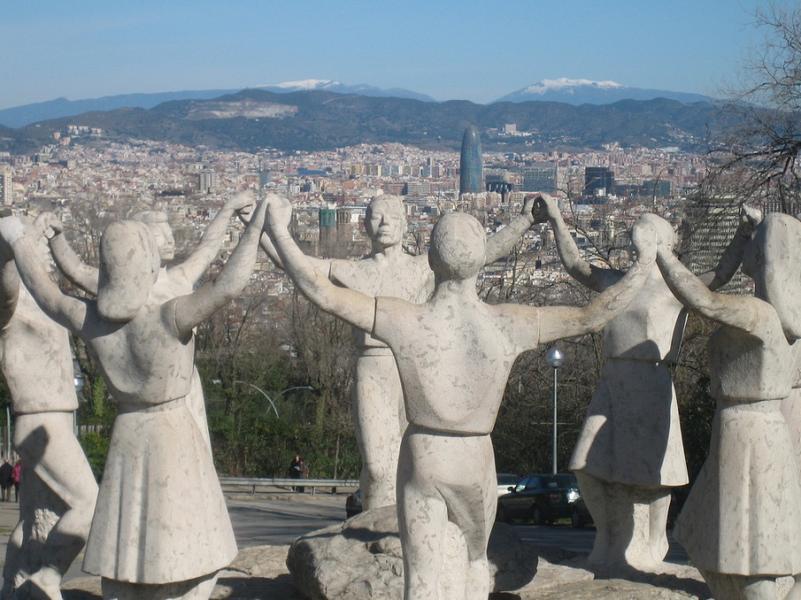- Read offline
- Access all content
- Use the in-app Map to find sites, and add custom locations (your hotel...)
- Build a list of your own favourites
- Search the contents with full-text search functionality
- ... and more!
The Sardana
Catalonia's national dance

As with so much that the Catalans do, they go about their national dance, the sardana, with a gravity that other peoples reserve for church. Especially the older Catalans: watch them in front of the Cathedral on Sunday at noon, or in the evening in Plaça de Sant Jaume when the cobla of musicians gather and play, all as serious as bank managers. Their coats and bags are placed in a pile in the centre, hands are joined to form a ring, and everyone steps intricately to the right, then to the left – slowly or more vigorously, depending on the rhythm.
The feeling that this is a communal rite is always there, an affirmation of Catalan identity and unity, of tapping Catalan feet gently awakening Catalan earth – it’s as far from the wild, pounding, passionate goblin of flamenco as you can get.
The dance is harder than it looks but, if you want to give it a go, don’t goof about: ‘To dance the sardana imperfectly is to commit a sin against art; it is to insult Catalunya,’ according to Aureli Capmany. Franco, needless to say, banned it.
The Catalans learned the ballo sardo back in the 15th century, during their unwelcome occupation of Sardinia. And as the Sards claim their circle dance is Neolithic in origin, the sardana’s roots are very deep indeed. So what comes as a surprise, seeing the serious faces, is the music, which is nothing like a Sard or any other folk tune you’ve ever heard, but rather in the vein of spritely boulevard tunes; nearly all sardanes were composed in the mid-19th century by one Pep Ventura. There’s an occasional melancholy strain, but it never lasts long; sometimes the tempo picks up, and the younger circles work up a bit of a sweat.
Image by Guadalupe Cervilla

